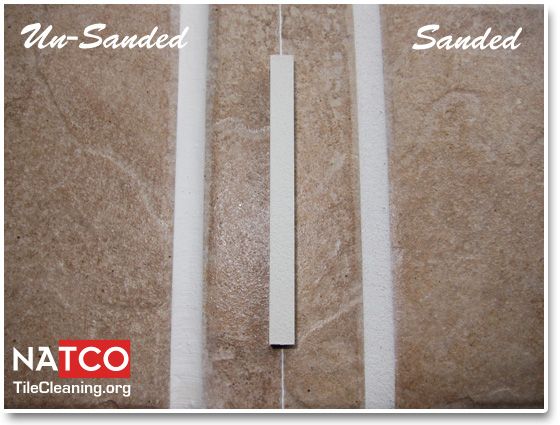Sanded grout vs. unsanded grout is two different types of grout used to fill the existing structure. Unsanded grout is also known as non sanded grout. These two types of grout are required for the household. Grout is a dense fluid that is used to fill the existing structure. Grouting is essential when you will remodel your kitchen, bathroom, or installing a new kitchen bathroom in your house or some other places. That is usually used in the tiles to fill the gap between them.
That is the process of grouting. We generally buy tiles from the store for different purposes. For example- it is making the floor, bathroom wall, kitchen wall, etc. Each piece of the flooring has to joint with another to give a total look of the surface. For that, grout is used. Here are two main types of grout that are sanded and unsanded grout. Unsanded grout is often known as non sanded grout. These two different types of grout are different in their functions, but these are used for the same purpose. That is filling the gaps between the two tiles. Let’s know more about the grout below.
Table of Contents
What is grout?
Grout is a fluid that is used to fill the gaps between two tiles. The juice of the grout is dense enough that can fill the holes correctly. There are different varieties of the grout. Tiling grout, mosaic grout, flooring grout, resin grout, etc. tiling, and mosaic grout are typically used to secure the base. It can fill the mosaic or tile void with another. But in most cases, we see that, in mosaic material, so many people don’t use grout to fill the gaps, and it still secure and work properly.
But this is not possible in tiles.
Without applying grout to fill the void, your tile won’t be considered as a secure one. The grout is made of water, cement, and sand. It is often color tint. So it is possible to choose the color if you want to apply your favorite color in your tile filling. This grout is often filling the void of the tiles. Not only for tiles, but the grout is also used for filling the gap between glass gaps.
But when you are going to apply the grout in the glass materials gap, then you have to choose the right grout for this. Unless it won’t work correctly there. You have to know before which kind of grout is appropriate with your using material. To get the best result and to avoid risks, you should know it properly.
We know that all kinds of material are not appropriate for all types of grout.
You cannot use random grout in random material to fill the gaps and distance. If you did so, you might have to face the problems after a few days, and that is a very annoying and painful task to fix it again. To get the best result, you should apply the proper grout on the surface.
So, how can you choose the proper grout for filling the void of the surface, and do you which grout is appropriate in which material? For this, we will discuss two different types of grout that we have known already. These are sanded and unsanded or non sanded grout. Let’s talk sanded vs. unsanded grout below-
Sanded grout
From the name sanded, we can easily understand that in sanded grout, silica sand is used there. With sand, the other essential component is cement and color tint. The silica sand grout is used there, and as a cement component, Portland cement exists. Some other chemical is also used there to make sanded grout.
This sanded grout is used for filling more extensive grout lines. That is very popular in the grout section. Most of the people used to buy this grout for their house or some other places where need. The best advantage of this sanded grout is it can prevent the water from infiltrating and ruining the substrate.
Unsanded or non sanded grout
Unsanded or non sanded grout is another type of grout. Like sanded grout, the working principle of this grout is to fill the void lines. But unsanded or non sanded grout is used for thin grout lines. The main components of this grout are cement and color tint. From the name unsanded or non-sanded, we able to understand that to sand have used to make this grout.
This unsanded or non sanded grout is also famous like sanded grout. The best advantage of this unsanded or non sanded grout is it can work with a vertical surface—for example, shower walls. Walls are vertical, and this unsanded grout is easier to work with that.
So, here are the two main types of grout.
We can notice that in these two different grout, both have a common component, and that is the Portland cement base. Which one is best for which material and how it will work in which surface will be able to know after the comparison of these two grout. However, they may have similarities in some working facts, but using cement in sanded grout and not using in unsanded grout make the difference between the two of them. The comparison between sanded vs. unsanded or non sanded grout is given below-
Sanded vs. unsanded or non sanded grout-
- When you have to choose the grout between sanded vs. unsanded for your work purpose, this should be the main consideration. As we say before that unsanded or non sanded grout is for thin grout lines, because unsanded or non sanded grout can fill the void joint distance smaller than 1/8” and on the other side sanded grout can work with thick grout lines. The distance of the joints can be 1/8” or more. In most of the time, this sanded grout is also used for filling the gap distance even 1/2 “. So in this situation, we can say sanded grout is amazing than unsanded or non sanded grout. But it is also true that we cannot deny the unsanded or non sanded grout because this is also essential in some other materials.
-
The sanded grout is made of silica sand, Portland cement, and color tint, but the unsanded or non sanded grout is made without any sand.
- As well as sanded grout, unsanded or non sanded grout also contains Portland cement and color tint. This is the other consideration when you are going to choose between sanded or unsanded grout.
- When you are choosing the grout sanded vs. unsanded, you should consider it also. As sanded grout contains sand, it doesn’t shrink, but on the other hand, unsanded or non sanded grout can shrink very easily. Also, we don’t need to apply so much sanded grout, but we have to apply a much more unsanded grout or non sanded grout because of its water evaporation.
-
Between sanded vs. unsanded grout.
- In sanded grout, you have to apply sealing after installation. But you don’t need to apply any sealing process in unsanded or non sanded grout. That is good. At this point, we can say unsanded grout is easier than sanded grout. But there is an argument that some of the applications you need sealing process even in the unsanded grout. So, before installing, you should follow the expert’s recommendation to avoid the risks of it.
- Unsanded grout does not have any sand there. That makes the unsanded grout sticky. That can hold the tiles properly there. So, between sanded vs. unsanded grout, you can use this unsanded or non sanded grout for your bathroom wall or kitchen wall as well. You may think that unsanded grout shrinking, and that makes problems in the vertical surface.
-
The good thing is no.
- We generally use tiles for vertical surfaces, and tiles are closed together. So it won’t make any changes after drying. It will still be durable enough. It will stick there properly. So you don’t need to worry about the durability of your surface because of using unsanded grout you have used in your vertical surface.
- If you are going to choose sanded vs. unsanded grout, you can consider this issue. You have to know which tiles you are using and which grout is needed for this. If you are using soft or smooth tiles like marbles, you shouldn’t use sanded grout there. Sanded grout can damage the surface of the marble. Because sanded grout contains more harsh materials that marbles. So, it will be the best choice to use unsanded or non sanded grout for polishing tiles like marbles as there is no harsh material like sanded grout.
- When we are thinking about sanded vs. unsanded grout, we can see that unsanded grout is more expensive than sanded grout. The polymer content in the unsanded grout driving up the cost of the unsanded or non sanded grout. On the other hand, sanded grout is less expensive because of its quite a dirt cheap and made with bulk sand. The price of the sanded grout is $0.50- $4.00 per pound, where the unsanded grouts price is $1.99-$6.99 per pound. So this is more expensive than sanded grout.
-
When you are going to differentiate between sanded vs. non sanded or unsanded grout.
- . When you are going to clean the unsanded grout after installing, the water can reduce the pigmentation of the color that is also the reason for its light color. But for them, you can find beige or gray colors. That is a neutral color.
- Another great consideration of the durability between sanded vs. unsanded or non sanded grouts. In this case, sanded grout is more durable than unsanded grout. The durability of the sanded grout because of the aggregate material that is using in it. But the unsanded or non sanded grout doesn’t have this kind of material. The sanded grout cannot reduce shrinkage, but the unsanded or non sanded grout can shrink after drying because there is no silica sand. So, it can pull away from tiles. But the sanded grout won’t move from its surface.
After all these discussions of sanded vs. unsanded grout, we can notice that some similarities exist. You have to know details of it to give the right product to your customer or even choose it for your purpose.
FAQ of sanded vs. unsanded grout
Question- Which grout is best for smooth tiles?
Answer- Unsanded grout. Because it dries smoothly and can remove the grout easily with water.
Question- Can I use sanded grout for rectified tiles?
Answer- No! It won’t be good for this material.








